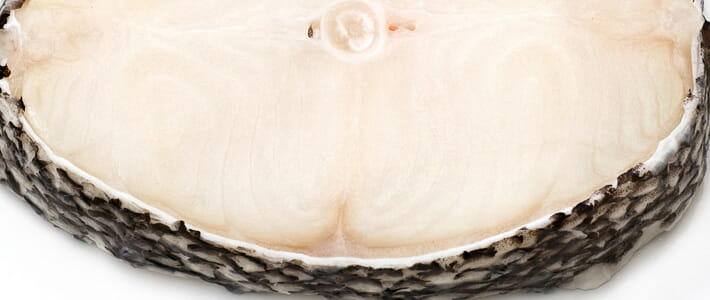Cod, Pacific
Gadus macrocephalus

Pacific cod is distinguished by a black dotted gray back, a white belly, and white sides. This species is almost identical to Atlantic cod but smaller with slightly softer flakes and a higher water content.
Most Pacific cod is sold frozen.
Product pdf for download-
3.5 oz (100g) raw edible portion.
-
Calories 82
-
Calories from Fat 5
-
Total Fat 0.6g
-
Saturated Fat 0.1g
-
Cholesterol 37mg
-
Sodium 71mg
-
Carbohydrates 0g
-
Protein 17.9g
-
Potassium 403mg
Interesting Fact
Cod is one of the most important commercial seafoods and is a mainstay in the industry.
Alternatives
Atlantic cod, Alaskan pollock, and haddock can be used as substitutes for Pacific cod.
Source
The Pacific cod is harvested throughout the North Pacific, most of it from the Bering Sea and the Gulf of Alaska. Japan, Korea, and Russia are large suppliers of frozen Pacific cod.
Harvest Method
This fish was mainly harvested by trawlers in the past, now it is primarily caught by longlining or pots.
Harvest Season
Pacific cod is available year-round, though the majority of the harvest takes place in the winter months.
Flavor
This species is mild and sweet in flavor.
Texture
The texture of Pacific cod is firm with a medium flake.
Preparation
Pacific cod is excellent when baked, steamed, sautéed, poached, or deep fried.
Quality Control
Cod meat is moist, so drip loss and shrinkage during processing and storage should be avoided. The best quality cod fillets should be translucent, white to pinkish-white, without bruises, moist, and firm.
Market Segments
Pacific cod is appropriate for casual dining, fine dining, hotels, and resort/country clubs.